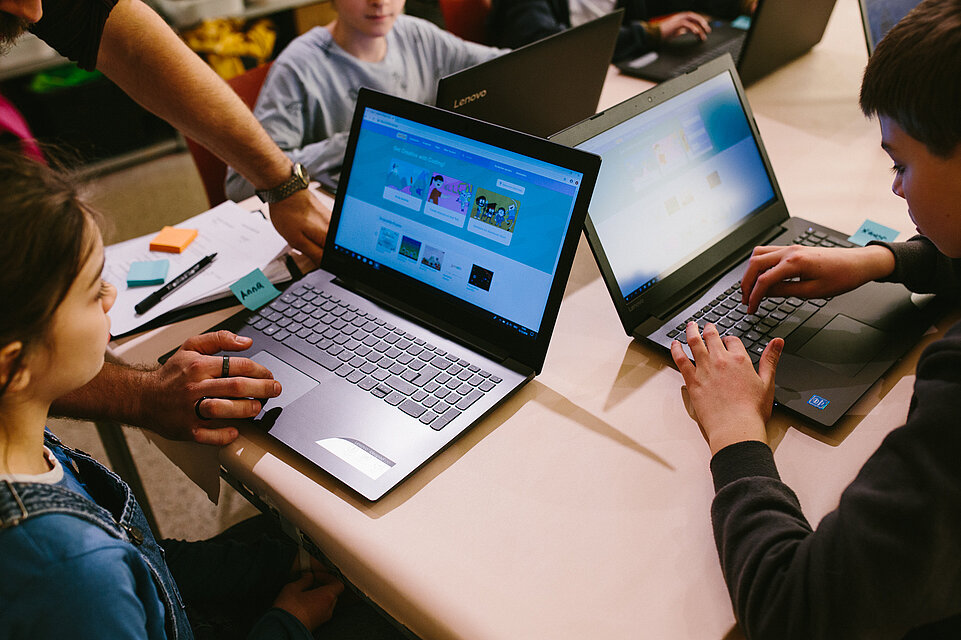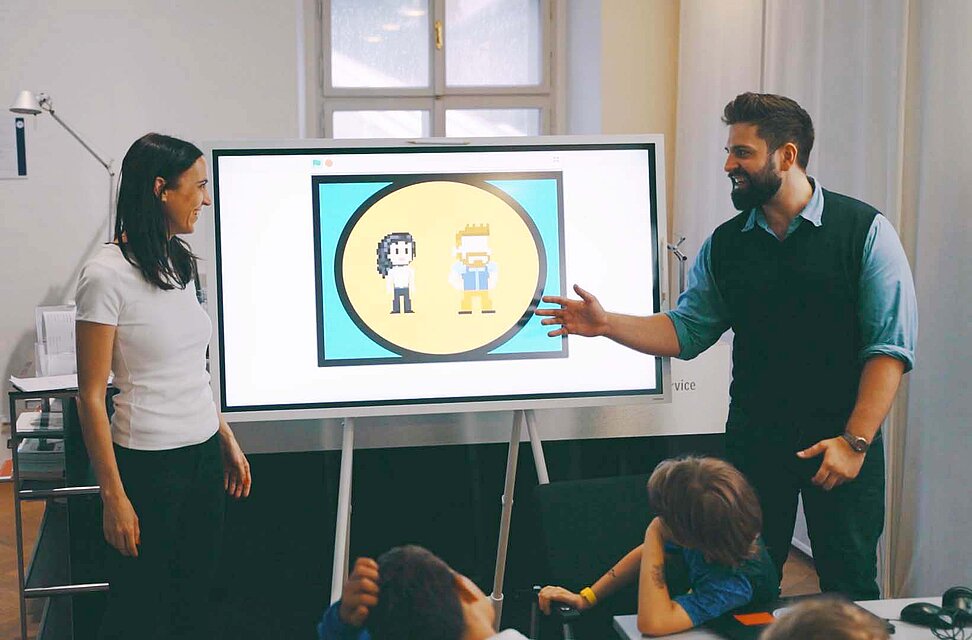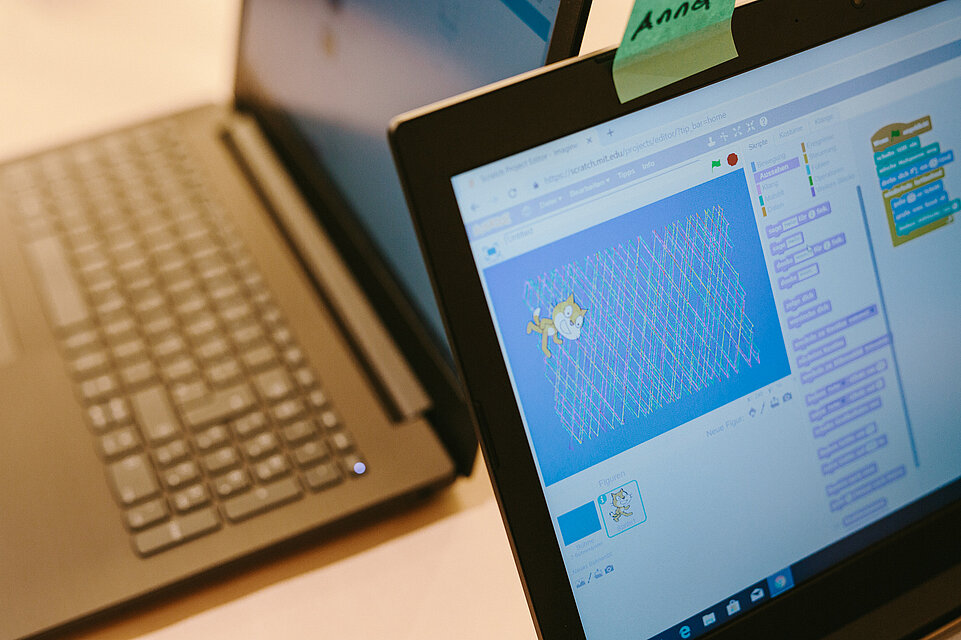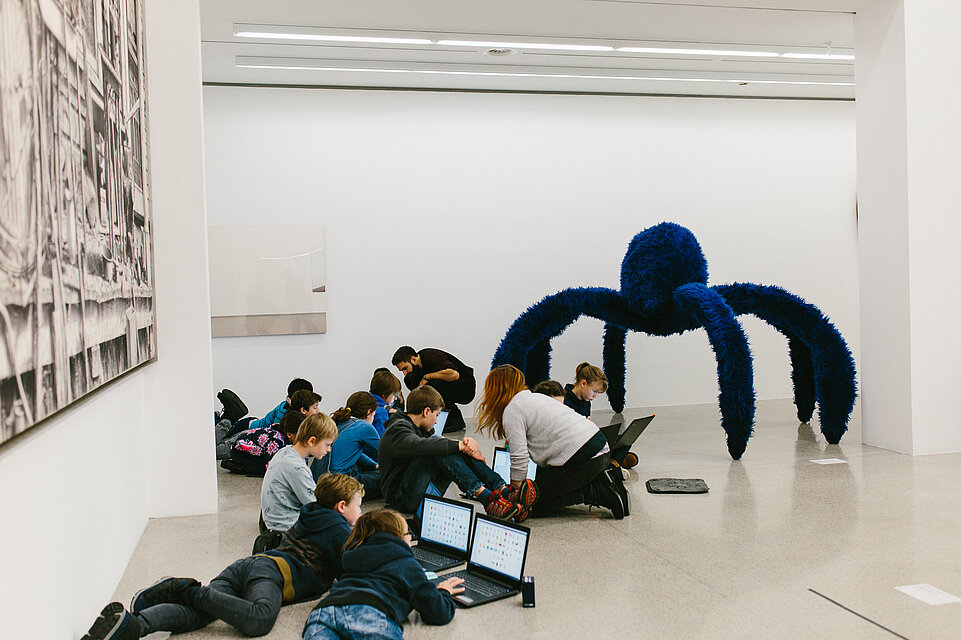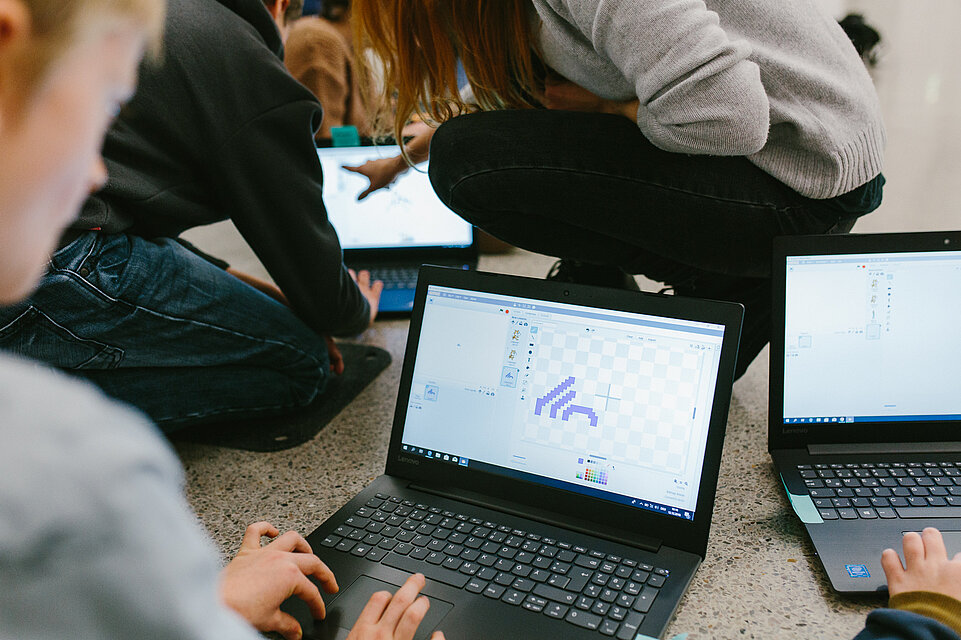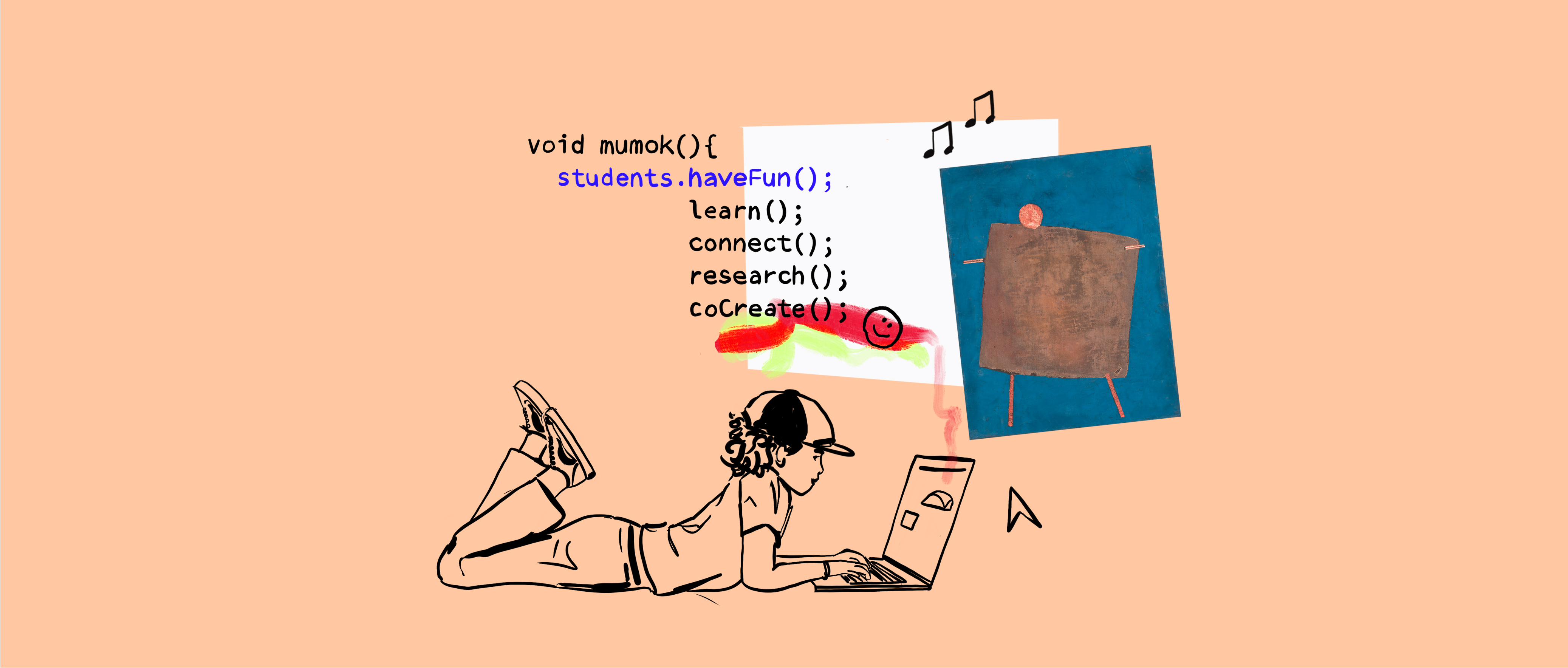
Creative Coding.
mumok Scratch Lab
mumok Scratch Lab
Learn to programme with Creative Coding
now with Scratch, Processing (Java based), C++, GLSL
Wanna learn how to programme? Do you also want to create your own digital artworks, develop games, build simulations and create and animate your own characters? Are you interested in finding out how computers and artificial intelligence work and how you can acquire and expand your programming skills in a fun way with creative coding?
Whether you want to programme block-based or text-based or deepen your programming knowledge, we offer creative programming courses for all levels. We welcome beginners and advanced students aged 8 to 20 and adults.
A fun way to learn: mumok Scratch Lab
The mumok Scratch Lab is a special and contemporary way of engaging with art digitally. In our creative coding courses, you will learn programming, discover new technologies as an artistic tool without pressure, create your own digital artworks, develop important media skills and immerse yourself in art and cultural history through programming. As a tool for creative expression and as a logical language, computer programming builds a bridge between many different disciplines. We combine STEM subjects with art and culture and work with you to build your own individual knowledge network. Each semester is based on a new topic - e.g. The Origin of Life, Signs and Symbols, Artificial Intelligence - and the knowledge we acquire together is implemented in a programming project. Our collection is the ideal playground for this: By unlocking your creative potential through exposure to our collection, we hope to inspire you to actively engage with modern and contemporary art and experience it as part of your everyday life.
We want to explore the digital world with you as a positive creative space, awaken your curiosity and have fun learning. And we will show you what programming and art have in common and how they to your digital empowerment. We are all learners in a constantly changing world.
Together we learn more! We offer two types of programming courses: The mumok Scratch Lab, where you take your first programming steps with Scratch and the Advanced Lab is all about text-based programming.
Scratch
To help you get started in the world of code, we work with the visual open-resource programming language Scratch, which was developed at MIT (Massachusetts Institute of Technology, USA) by the Life Long Kindergarten Group and is taught at universities such as Harvard and Berkeley. Scratch offers almost limitless creative possibilities: Images, music and text are easily combined using the computer language. We have Scratch courses for beginners and advanced students in our programme.
Text-based programming in the Advanced Lab
For all those who have already taken their first steps in programming, our Advanced Lab introduces text-based programming with the open source computer language Processing (Java-based). And advanced users will learn about and use other programming languages such as Java, C++ and GLSL in their own projects. There are also courses for beginners and advanced students in the Advanced Lab.
Please note: All courses take place in German.
See our German website for course dates and registration.
Artificial Intelligence: our new semester focus
All Creative Coding courses take an in-depth look at various forms of A.I., its cultural significance and the programming behind it. From autonomous agents and perceptron’s to object-orientated artificial neurons, not only are artistic codes developed, but the concept of intelligence itself is also explored and examined with different positions in the collection.
All courses take place in the museum and are a mixture of group and individual lessons. We always draw inspiration for our own programming projects from our semester topic Artificial Intelligence, which we illuminate and explore extensively and from multiple perspectives with our collection works. In each course unit, we explore an aspect of A.I. and teach important programming principles. Course participants are also given sufficient time to work on their own digital projects and receive the best possible individual support from us at all times. Speaking of individual work in the museum: we provide a laptop for each course participant free of charge for the duration of the workshop.
For the mumok Scratch Labs and the Advanced Lab for Beginners, no programming knowledge or art experience is necessary! The programming languages Scratch and Processing are free and visual open-source computer languages.
Contact
For questions or if the course of your choice is already fully booked, please contact our curator for creative learning, Benedikt Hochwartner: 0699 10013691 and benedikt.hochwartner@mumok.at.
Creative Learning in the Museum: What to expect
Benedikt Hochwartner answers questions about the mumok Scratch Lab and his work as a curator for Creative Learning
What are your responsibilities at the museum?
I’m a curator for creative learning. My most important task is to develop the interdisciplinary course criteria within the field of creative learning, particularly with respect to digital and analogue semester courses. For me, most of all, it’s about promoting an intense engagement with our collection inventory in digital and non-digital space.
At mumok you offer the so-called Scratch Lab for children. Why are there programming courses at mumok?
Because here in the Art Education department we don’t just want to pursue well-trodden paths, and because there is literally no better place, on an individual and creative level, to experience the connection between art, science, and new technology through creative learning.
What does programming have to do with contemporary art?
Everything! But less hyperbolic, we actually find ourselves in constant conflict with the digital world. In both a positive and a negative sense. Art as a mirror of our time reflects this discourse constantly. On the one hand, of course, analogue events still determine the course of our daily lives and our history; on the other hand, our view of them in almost every respect is digitally filtered, our every action digitally transformed. And whether we like it or not, digital literacy will no longer be optional for our children.
What do the participants learn outside of programming?
Interacting reflectively with this ambivalent digital medium represents a great challenge—but also opportunity—for us. Through programming, we are able to produce, or at least to simulate, other media, different types of art, language, movement, and natural processes to a spectacular degree. The superb mumok Collection is always a playground for our minds, an experimental laboratory, and an anchor in this world full of possibilities.
We also always prepare our participants for the dangers within online environments and provide them with all the resources they need to look out for themselves and other users and to protect themselves and their data.
What are the requirements for the course?
Interest in and enjoyment of creative learning. We currently offer courses for children and teenagers aged 8 to 19 as well as for adults. Our courses for students will also be starting again soon.
How do you start off with your participants in the workshop?
We concern ourselves in each module with a thematic focus, where at its core artist, artwork, cultural-historical associations, but also artistic practices are individually reconstructed, altered, or used as brainstorming for new developments using programming technology.
© mumok – museum moderner kunst stiftung ludwig wien
